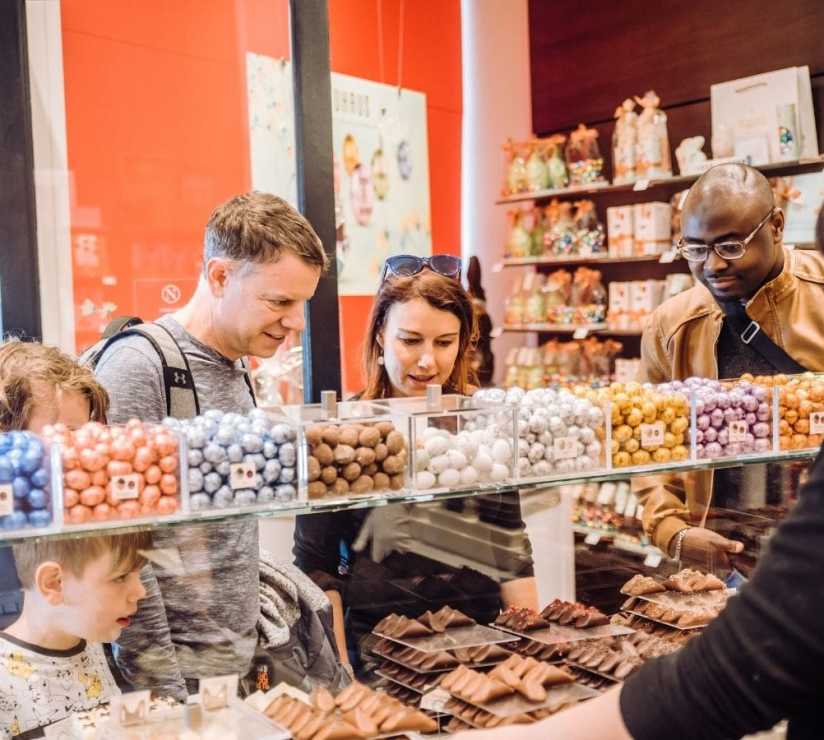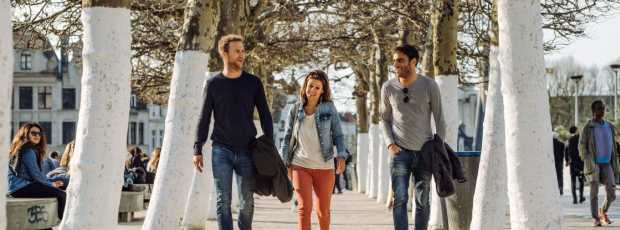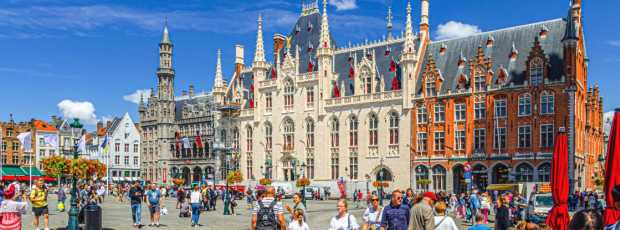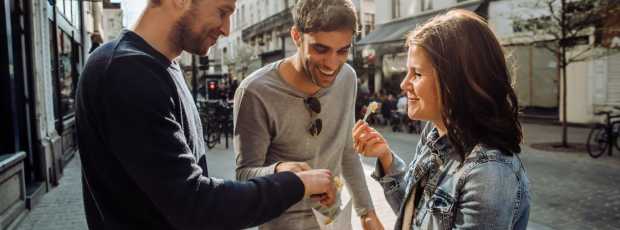Table Of Contents
- Is Grand Place Worth Visiting in Summer?
- What's Actually Open at the Royal Palace in Summer?
- Where Do Locals Go for Beer?
- What Makes Mont des Arts Special in Summer?
- Are the Galeries Royales Saint-Hubert Worth Your Time?
- How Do You Navigate the European Quarter in Summer?
- What's the Deal with Belgian Waffles and Summer?
- Why Do Brussels Museums Matter in Summer?
- Are Brussels Parks Worth Visiting?
- What About Brussels Architecture in Summer Light?
- How Do You Find the Real Brussels Food Scene?
- What Makes Brussels Shopping Special?
- Are Brussels Summer Festivals Worth Planning Around?
- How Do You Navigate Brussels Like a Local?
- What About Brussels Nightlife in Summer?
- Is Brussels Safe for Summer Visitors?
- What Are the Best Brussels Day Trips?
- How Do You Experience Brussels Beyond the Guidebooks?
- Why Brussels Summer Weather Actually Works
- Final Thoughts on Brussels Summer
Here's the thing about things to do in Brussels summer: everyone expects you to gush about cobblestones glistening in perpetual drizzle, but summer here is when we finally stop apologizing for our weather. The city sheds its gray wool coat and reveals what we locals have known all along; Brussels doesn't need Instagram filters to be beautiful.
I've lived here thirty-two years, and I still discover corners that make me pause. Summer strips away the tourist veneer and shows you Brussels as it actually is: a city where medieval charm meets bureaucratic efficiency, where you can debate European policy over beer at 2 PM without anyone batting an eye.
Is Grand Place Worth Visiting in Summer?
Grand Place becomes something entirely different when the sun hits those guild houses just right. The UNESCO World Heritage site that everyone photographs actually deserves its reputation, but not for the reasons you'd expect. Summer brings the flower carpet (if you're lucky enough to visit in August) but more importantly, it brings the Belgian Beer Weekend in early September.
The central square fills with Brussels residents during summer evenings. We claim the terraces, nurse our Jupiler or Stella, and watch tourists take the same photos we see year-round. But here's what the guidebooks won't tell you: Grand Place is most beautiful at 7 AM when the cleaning trucks have just finished and the morning light catches the gold details on the town hall.
Grand Place works because it's simultaneously a tourist magnet and a genuine gathering place. The Brussels City Museum sits right here, housing our city's history; not the sanitized version.
Summary: Grand Place transforms in summer from tourist photo-op to genuine local gathering spot, especially during early morning hours and evening terrace culture.
What's Actually Open at the Royal Palace in Summer?
The Royal Palace typically opens its doors to the public after Belgian National Day (July 21st) through to early September. This is your one chance to see where the Belgian royal family conducts official business (though they actually live elsewhere).
The Palais Royal de Bruxelles stands as an impressive, perhaps even endearingly quirky, symbol of Belgium. Within its walls, mirrors reflect centuries of conversations between European leaders, while throne rooms have quietly observed decades of diplomatic exchanges. Surprisingly delicate porcelain collections also reside here. The palace itself, without needing overt patriotic displays, subtly narrates the compelling story of Belgium's independence.
What strikes me most is how the palace connects to Parc de Bruxelles through those perfectly manicured gardens. Summer evenings here feel like stepping into a period drama, except the period is "constitutional monarchy meets modern democracy" and it's somehow more interesting than it sounds.
Summary: The Royal Palace's summer opening offers rare access to Belgian royal protocol spaces, best experienced in connection with the surrounding park.
Looking for a private city experience in Brussels?
Explore the city with a local who plans a private day just for you; no groups, no scripts.
Where Do Locals Go for Beer?
Real Belgian beer culture happens in neighborhoods like Ixelles and Saint-Gilles, where summer terraces spill onto sidewalks and conversations flow as freely as Chimay (Trappist beer).
The Belgian Beer Weekend in early September transforms Grand Place into a massive outdoor sampling room, but the real education happens at places like Delirium Café (holds a Guinness World Record for most beers offered) or the smaller bars in the European Quarter where EU staffers decompress after long days of legislation.
Belgian beer isn't just about the alcohol, it's about the social architecture. Summer brings the ritual of claiming a terrace table, ordering rounds for strangers, and debating everything from football to European policy. The breweries understand this: summer varieties include fruit beers that taste like sunshine and skepticism combined.
Summary: Authentic beer culture thrives in neighborhood terraces during summer, offering social experiences beyond the tourist-focused beer tours.
What Makes Mont des Arts Special in Summer?
Mont des Arts becomes outdoor living room of Brussels during summer months. This cultural quarter connecting upper and lower town transforms from a windswept cultural district into something approaching Mediterranean charm.
The Royal Museums of Fine Arts cluster here, including the Magritte Museum which houses some of Belgium's most important collections. Summer also brings an outdoor component: the gardens, the wide steps where office workers eat lunch, and the café terraces that offer views across the entire city.
Mont des Arts works because it's simultaneously high culture and public space. The Museums of Fine Arts showcase centuries of fine arts of Belgium, while the surrounding gardens provide space for summer concerts and impromptu gatherings.
Summary: Mont des Arts combines world-class museums with summer outdoor spaces, creating Brussels's most successful cultural district.
Are the Galeries Royales Saint-Hubert Worth Your Time?
The Galeries Royales Saint-Hubert represent Brussels at its most elegant and practical. These 19th-century shopping arcades protect you from our famously unpredictable weather while offering some of the city's finest chocolate and antique shops.
Summer brings the best of both worlds: you can enjoy the stunning glass roof that crowns the gallery, and step outside to the surrounding terraces when the weather cooperates. The galleries house serious Belgian chocolate makers, the ones that supply Brussels's finest restaurants.
Galeries Royales Saint-Hubert connects to the comic strip walk that traces Brussels's contribution to the art form. Summer makes this walking tour pleasant, as you can appreciate the outdoor murals without fighting wind and rain.
Summary: The Galeries Royales Saint-Hubert offer elegant shopping with both indoor comfort and summer outdoor access.
What if your day in Brussels was planned by someone who knows it — and you?
City Unscripted matches you with a local host who creates a private experience based on your interests, not a set route.
How Do You Navigate the European Quarter in Summer?
The European Quarter transforms during summer when the European Parliament runs at reduced capacity and the usually frantic pace of EU business slows to something approaching human scale.
'Visit Brussels' materials will tell you to tour the European Parliament and its Parlamentarium, but summer offers something more interesting: the chance to see how European bureaucracy actually functions. The European Quarter becomes less intimidating when you can sit at outdoor cafés and observe the daily rhythms of continental governance.
The European Quarter also houses some of Brussels's most interesting museums, including military history collections and art galleries that rarely make tourist itineraries. Summer provides the energy to explore these overlooked cultural institutions.
Summary: The European Quarter becomes more accessible and human-scaled during summer, offering insights into both EU operations and lesser-known cultural attractions.
What's the Deal with Belgian Waffles and Summer?
Waffle eating reaches its peak during Brussels summers, but not in the way you'd expect. The real action happens at neighborhood markets and local cafés, not the tourist-focused waffle stands.
Brussels waffle versus Liege waffles; the debate that divides our nation becomes more pressing when you're eating them on sun-warmed terraces. Brussels waffles are lighter, more delicate, designed for whipped cream and fresh fruit. Liege waffles are dense, sweet, perfect for eating while walking through summer markets.
The Belgian waffle tradition connects to our broader culinary delights culture. Summer markets showcase local ingredients, from fresh berries to artisanal butter, that transform a simple waffle into something approaching art.
Summary: Waffle culture peaks in summer through neighborhood markets and terraces, offering authentic experiences beyond tourist-focused stands.
Why Do Brussels Museums Matter in Summer?
Brussels museums gain a different energy during summer when natural light floods spaces designed for contemplation and discovery. The Brussels City Museum in Grand Place provides air-conditioned relief while telling the story of how this city developed.
The Horta Museum showcases Brussels's contribution to Art Nouveau architecture, while the car museum in the Parc du Cinquantenaire offers surprisingly engaging displays about industrial design. Summer provides the energy to explore these collections thoughtfully.
Museum houses throughout Brussels open their doors during summer months, offering glimpses into how the city's cultural elite lived and worked. These smaller institutions provide intimate alternatives to the major Royal Museums complexes.
Summary: Brussels museums benefit from summer light and extended hours, offering both relief from heat and enhanced viewing conditions for permanent collections.
Tip
We match you with the right host, not just any guide.Want to experience the real Brussels with someone who lives there?
A fully private experience, planned and led by a local host who tailors the day to you
Are Brussels Parks Worth Visiting?
Brussels parks become the city's saving grace during summer heat. Parc du Cinquantenaire offers massive green spaces and shaded walks, while Parc de Bruxelles provides formal gardens and people-watching opportunities.
The beautiful parks throughout Brussels serve different functions: Parc de Bruxelles for formal strolls and political spotting, Parc du Cinquantenaire for serious recreation and museum visits, and the smaller neighborhood parks for daily life.
Summer brings Brussels's outdoor culture to life. These parks fill with families, office workers, and students who understand that fresh air and green space are essential to city survival.
Summary: Brussels parks provide essential green relief during summer, each serving distinct recreational and cultural functions.
What About Brussels Architecture in Summer Light?
Brussels architecture reveals itself differently under summer light. The stunning architecture that defines our city center includes everything from medieval charm to Art Nouveau innovation, all visible without the usual gray filter.
The historic landmarks throughout Brussels gain drama and detail when proper light hits them. St Michael cathedral, the various guild houses, and the Art Nouveau residential buildings that line our better neighborhoods all benefit from summer visibility.
Brussels Cathedral and other religious buildings reveal their beautiful stained glass windows when summer light streams through them. These architectural details disappear during our darker months but emerge as genuine artistic achievements when properly illuminated.
Summary: Summer light reveals architectural details and artistic elements throughout Brussels that remain hidden during the city's grayer months.
How Do You Find the Real Brussels Food Scene?
Belgian cuisine extends far beyond waffles and delicious fries. Summer brings market season, outdoor dining, and the chance to explore traditional dishes in their proper context.
The culinary delights of Brussels reflect our complex cultural identity: French technique, German heartiness, and a particularly Belgian approach to quality ingredients. Summer markets showcase local producers who supply the city's finest restaurants.
Fries become more than a tourist novelty when you understand the cultural significance. Belgians take their frites seriously, and summer brings the perfect conditions for appreciating why we consider them an art form.
Summary: Brussels food culture peaks during summer markets and outdoor dining, showcasing the complexity of Belgian cuisine beyond tourist favorites.
Ready to plan your perfect day in Brussels?
Start your experienceWhat Makes Brussels Shopping Special?
Beyond the Galeries Royales Saint-Hubert, Brussels offers shopping experiences that reflect the city's complex cultural identity. Trendy bars and chocolate shops cluster in neighborhoods that tourists rarely discover.
Antique shops throughout Brussels offer genuine finds, from Art Nouveau furniture to Belgian comics memorabilia. Summer provides the energy to explore these specialized retailers that require patience and knowledge.
The chocolate shops that matter aren't the branded tourist destinations but the small producers who supply Brussels's finest restaurants and cafés. Summer brings the seasonal flavors and the energy to appreciate chocolate as culinary art.
Summary: Brussels shopping culture combines historic galleries with neighborhood specialists, offering authentic experiences beyond mainstream retail.
Are Brussels Summer Festivals Worth Planning Around?
Brussels summer festivals reflect the city's cultural complexity without the usual tourist marketing. The Brussels Jazz Weekend and Brussels Summer Festival offer music in intimate settings, while the Brussels International Fantastic Film Festival showcases cinema that rarely receives mainstream attention.
Cultural events throughout summer include the Zinneke Parade and the Ommegang pageant, which showcase Brussels's artistic communities and historical traditions. These events feel organic rather than manufactured for tourism.
The Belgian Beer Weekend in early September combines serious beer education with genuine festival atmosphere. Unlike tourist-focused events, this celebration draws locals who understand beer culture as social architecture.
Summary: Brussels summer festivals offer authentic cultural experiences that combine local participation with accessible programming for visitors.
How Do You Navigate Brussels Like a Local?
Brussels location is advantages become clear during summer when the city's walkability and public transport efficiency shine. The historic center connects easily to neighborhood destinations without the usual weather challenges.
The Brussels card provides access to museums and public transport, but summer brings the opportunity to explore on foot. The city's compact size means you can walk from Grand Place to the European Quarter in under thirty minutes.
Most people when they visit Brussels focus on major attractions, but summer reveals the neighborhood culture that make the city function. Local markets, cafés, and park gatherings show how Brussels residents navigate their daily lives.
Summary: Brussels becomes most walkable and accessible during summer, revealing neighborhood cultures that exist beyond major tourist attractions.
What About Brussels Nightlife in Summer?
Brussels nightlife transforms during summer when terraces extend late into evening and the city's social life moves outdoors. Trendy bars in neighborhoods like Ixelles and Saint-Gilles offer alternatives to tourist-focused establishments in Grand Place.
The Delirium Café and similar establishments gain outdoor seating and extended hours, creating social spaces that feel more Mediterranean than Northern European. Summer brings the energy to explore Brussels's bar culture as social architecture.
Beer culture reaches its peak during summer evenings when conversations flow as freely as the Chimay and Westmalle. The city's bar culture combines serious beer appreciation with relaxed social interaction.
Summary: Brussels nightlife benefits from summer terrace culture and extended hours, creating social spaces that showcase the city's relaxed approach to evening entertainment.
Is Brussels Safe for Summer Visitors?
Brussels safety concerns often focus on reputation rather than reality. Summer brings increased police presence and more street activity, both of which contribute to safety in practical terms.
The city's summer energy creates natural surveillance and community engagement. Street life increases, neighborhood businesses extend hours, and the overall atmosphere becomes more welcoming to visitors who understand basic urban navigation.
Brussels transforms during summer from a bureaucratic capital to a livable European city. The increased street activity and extended daylight hours create conditions that feel secure and welcoming.
Summary: Brussels safety improves during summer through increased street activity and extended daylight hours, creating natural community surveillance.
What Are the Best Brussels Day Trips?
Things to do today in Brussels extend beyond the city center to include day trips that showcase Belgian culture and history. Summer provides ideal conditions for exploring regional attractions accessible by public transport.
Here are some excellent day trips from Brussels that are easily accessible by train or car:
Historic Belgian Cities:
- Bruges (1 hour by train) - Medieval canals, cobblestone streets, and chocolate shops
- Ghent (35-40 minutes by train) - Less touristy than Bruges but equally beautiful, with impressive castle and cathedral
- Antwerp (40 minutes by train) - Diamond district, fashion scene, and Rubens House museum
- Leuven (30 minutes by train) - University town with beautiful Gothic town hall and vibrant student atmosphere
Battlefield Sites:
- Waterloo (30 minutes by train/bus) - Napoleon's final defeat, with museum and battlefield monument
- Ypres/Ieper (1.5 to 2 hours by train) - WWI battlefields, Menin Gate memorial, and In Flanders Fields Museum
- Bastogne (2 hours by car) - WWII Battle of the Bulge sites and war museums
Unique Attractions:
- Mechelen (30 minutes by train) - Charming cathedral city with carillon school and toy museum
- Dinant (1.5 to 2 hours by train) - Scenic Meuse River town, birthplace of Adolphe Sax (inventor of saxophone)
- Tournai (1 hour by train) - Belgium's oldest city with impressive Romanesque cathedral
Nature & Relaxation:
- Namur (1 hour by train) - Confluence of rivers, citadel, and gateway to Ardennes forests
- Spa (2.5 to 3 hours by train) - Original spa town with thermal baths and mineral waters
- Durbuy (2 hours by car) - "Smallest city in the world" with medieval charm and outdoor activities
Cross-Border Options:
- Lille, France (1.5 hours by train) - French architecture, markets, and cuisine
- Maastricht, Netherlands (2.5 hours by train) - Historic Dutch city with unique culture
- Aachen, Germany (2 hours by train) - Charlemagne's capital with impressive cathedral
**The travel times are estimates, though some are on the optimistic side, reflecting the fastest possible journey rather than an average, and some involve changes not explicitly stated in the brief time indication.
Most of these destinations work well as day trips, though some like the Ardennes region might benefit from an overnight stay to fully explore the area.
The Brussels experiences that matter most often require stepping outside the tourist zone to understand how the city connects to broader Belgian identity. Summer weather makes these explorations practical and enjoyable.
Regional destinations accessible from Brussels include medieval towns, battlefield sites, and cultural centers that provide context for understanding the city's role in European history.
Summary: Brussels serves as an excellent base for summer day trips that provide cultural and historical context for understanding Belgian identity.
How Do You Experience Brussels Beyond the Guidebooks?
The real things to do in Brussels in summer involve understanding the city as a living place rather than a tourist destination. Summer reveals the daily rhythms that make Brussels function as both a European capital and a neighborhood-based community.
Brussels rewards visitors who approach it with curiosity rather than a checklist. Summer provides the energy and weather conditions to explore neighborhoods, engage with locals, and discover the cultural complexity that makes this city genuinely interesting.
The historic landmarks and museums matter, but they gain meaning when you understand how they connect to contemporary Brussels life. Summer brings the opportunity to see these connections naturally.
Summary: Brussels reveals its authentic character to visitors who explore beyond guidebook recommendations, especially during summer when neighborhood life moves outdoors.
Why Brussels Summer Weather Actually Works
Early September brings some of Brussels's finest weather, with warm days and cool evenings that showcase the city at its most appealing. This timing coincides with cultural events like the Brussels Flower Carpet and various festivals.
Brussels summer weather provides genuine relief from our notorious gray reputation. Clear days reveal architectural details, green spaces become genuinely inviting, and the city's outdoor culture emerges from winter hibernation.
The fresh air and extended daylight hours create energy that transforms Brussels from a bureaucratic capital into a livable European city. Summer provides the conditions for appreciating what locals have known all along.
Summary: Brussels summer weather, especially in early September, creates optimal conditions for experiencing the city's cultural and architectural attractions.
Final Thoughts on Brussels Summer
Things to do in Brussels summer ultimately involve understanding the city as a complex, culturally rich place that happens to be beautiful when the weather cooperates. Summer strips away the gray filter and reveals Brussels as it actually is: a city where medieval charm meets modern functionality, where Belgian beer culture provides social architecture, and where European Union politics coexist with neighborhood life.
The stunning architecture, culinary delights, and cultural events gain meaning when you approach them with curiosity rather than tourist expectations. Brussels rewards visitors who understand it as a living place rather than a museum.
Summer provides the energy and conditions to explore Brussels thoughtfully, to engage with its cultural complexity, and to discover why those of us who live here consider it one of Europe's most underappreciated cities. The weather may not always cooperate, but when it does, Brussels reveals itself as genuinely worth your time.
Summary: Brussels summer offers optimal conditions for experiencing the city's complex cultural identity, combining historical significance with contemporary European life.
What if your day in Brussels was planned by someone who knows it — and you?
City Unscripted matches you with a local host who creates a private experience based on your interests, not a set route.
Want to experience the real Brussels with someone who lives there?
A fully private experience, planned and led by a local host who tailors the day to you











